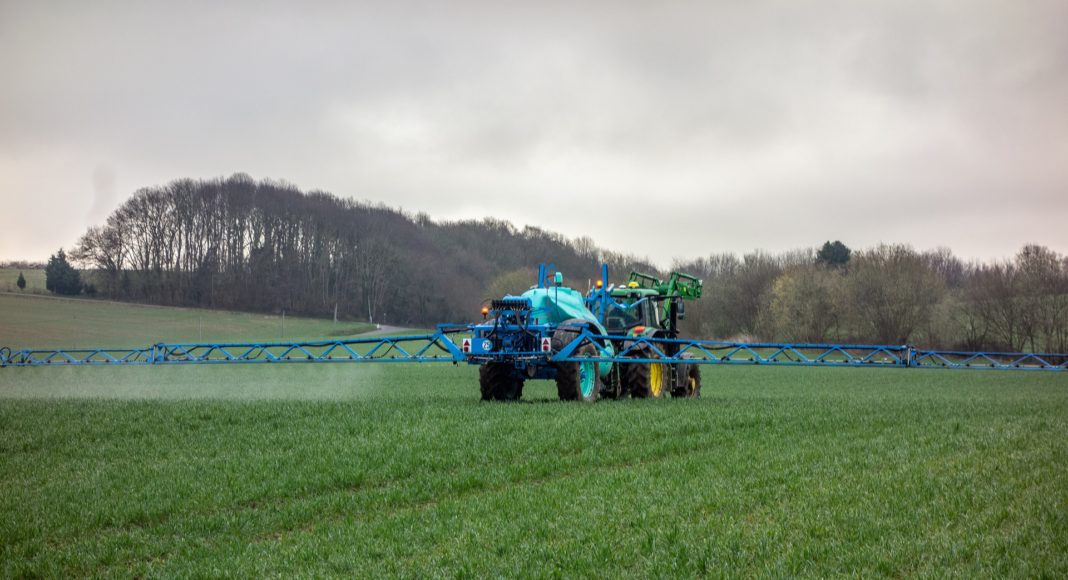Clothianidin’s in-furrow potato application and thiamethoxam’s soil drench potato applications have been cancelled, Health Canada’s Pest Management Regulatory Agency (PMRA) says in two published decisions on March 31. Clothianidin and thiamethoxam are still allowed for foliar application on potatoes.
The decision for clothianidin stated it’s still acceptable for use with additional risk mitigation measures, however in-furrow application on potato and seed treatment for field sown leafy vegetables and bunching onion was cancelled. The decision for thiamethoxam said it’s acceptable for use with additional risk mitigation measures also, but potatoes saw a use cancellation for soil drench application, while foliar application on lowbush blueberries was also cancelled.
The decisions were reached following environmental risk assessments over the past few years. The review process of these two products, along with imidacloprid, all classified as neonicotinoids, began in 2016. At the time the Canadian government proposed a phase-out of all agricultural uses of imidacloprid, as the insecticides were accumulating in ponds, creeks and other water bodies near agricultural land. Two years later the same phase-out recommendation was made for thiamethoxam and clothianidin. The European Union has previously banned neonic use.
The new regulations for clothianidin are as follows:
- The maximum foliar rate for use on potatoes is reduced to a single application of 52.5 g a.i./ha per season.
- The maximum seed treatment rate for field corn is reduced to 150 g a.i./100 kg seed. This results in the cancellation of the use for corn rootworm. No change is required for popcorn or sweet corn.
- For seed treatment uses on vegetables, the yearly maximum rate per hectare is limited to 100 g a.i./ha. This limits the planting rates used on broccoli, bulb onion, carrot, cabbage, cucumber and leek to meet this yearly maximum rate.
- The maximum foliar rate for use on cucurbits is reduced to a single application of 70 g a.i./ha per season. This results in the cancellation of use for brown marmorated stink bug.
- The maximum foliar rate for use on turf is reduced to a single application of 125 g a.i./ha per season. This results in the cancellation of use for hairy chinch bug, annual bluegrass weevil, bluegrass billbug and European crane fly.
- Cancellation of greenhouse seed treatment use for onion maggot and seed corn maggot on bulb onions, as these are only pests found in field production.
- New or revised spray buffer zones are required for freshwater habitats.
For thiamethoxam use the following regulation changes:
- The number of foliar applications is reduced to one per year on dry shelled bean, potato, soybean.
- The maximum seed treatment rate for field corn (including seed corn production) is reduced to 200 g a.i./100 kg seed. This will result in the cancellation of the use for planting in Canada for corn rootworm (including for seed corn production). No change is required for popcorn or sweet corn.
- The maximum seed treatment rate for soybean is reduced to 30 g a.i./100 kg seed. This will result in the cancellation of the use for bean leaf beetle, European chafer, soybean aphid, and wireworm.
- The maximum soil drench and in-furrow rate for leafy vegetables is reduced to 90 g a.i./ha. This will result in the cancellation of the use for cabbage looper, beet armyworm, corn earworm and fall armyworm.
- The maximum soil drench and in-furrow rate for brassica vegetables is reduced to 90 g a.i./ha. This will result in the cancellation of the use for dipteran leafminers, cabbage looper, diamondback moth, imported cabbageworm, thrips, beet armyworm, corn earworm, fall armyworm, and yellowstriped armyworm.
- The number of foliar applications is reduced to one per year for the following vegetables and listed pests: all pests on celeriac and for pepper weevil on peppers. In the case of fruiting vegetables, for stink bug, tarnished plant bug and brown marmorated stink bug the number of applications at the highest application rate (52.5 g a.i./ha) is reduced to one per year.
- The number of foliar applications is reduced to one per year on cranberry. There is also a requirement to hold flood water for 30 days for cranberries that require flooding.
- New or revised spray buffer zones are required for freshwater and terrestrial habitats.
To comply with this decision, the required amendments, mitigation measures and label updates must be implemented on all product labels no later than 24 months after March 31, 2021, the decisions note. The decision for imidacloprid use will be released later.











